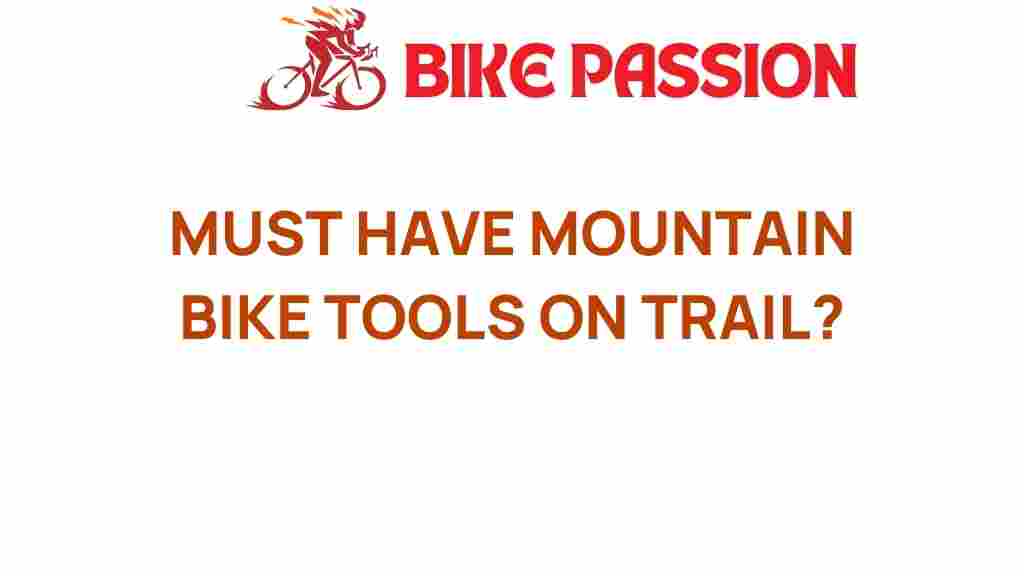Essential Mountain Bike Tools: What You Really Need on the Trail
Mountain biking is an exhilarating outdoor adventure that requires not only skill and stamina but also the right mountain bike tools to ensure a safe and enjoyable ride. Whether you’re a seasoned rider or a beginner, knowing which biking gear to carry can make a significant difference in your biking experience. In this article, we will explore the essential tools and accessories you should have on the trail, provide a gear checklist, and share tips on bike maintenance and safety.
Understanding the Importance of Mountain Bike Tools
When you’re out in nature, the last thing you want is to be unprepared for mechanical issues or emergencies. Having the right mountain bike tools can help you address common problems, ensuring that you can continue your ride or safely return to the trailhead. Here are some essential categories of tools and gear you should consider:
- Basic repair tools
- Maintenance supplies
- Safety gear
- Navigation tools
Essential Mountain Bike Tools and Gear
Below is a detailed list of the trail essentials you should carry, along with their functions:
1. Multi-Tool
A multi-tool is a must-have for any mountain biker. It usually includes several essential tools such as:
- Hex keys
- Flathead and Phillips screwdrivers
- Chain breaker
- Spoke wrenches
Look for a compact and lightweight model that fits easily in your pocket or hydration pack.
2. Tire Repair Kit
Punctures are a common issue on the trail. A tire repair kit typically includes:
- Tube patches
- Levers
- Spare inner tube
Make sure to practice changing a tire before hitting the trails to gain confidence in your ability to fix issues on the go.
3. Pump or CO2 Inflator
A portable pump or CO2 inflator is essential for reinflating tires after a flat. Choose a model that is lightweight and easy to use. Some riders prefer CO2 inflators for their speed, while others stick with hand pumps for reliability.
4. Chain Lubricant
Keeping your chain lubricated is crucial for bike performance. Carry a small bottle of chain lubricant to apply as needed, especially after riding in wet or muddy conditions.
5. First Aid Kit
Your safety should always be a priority. A compact first aid kit can address minor injuries such as cuts, scrapes, or insect bites. Include items like:
- Band-aids
- Antiseptic wipes
- Gauze and tape
- Pain relievers
6. Hydration System
Staying hydrated is key during any outdoor adventure. Invest in a good hydration pack or water bottle that is easy to access while riding. Make sure to carry enough water for your ride length.
Getting lost can turn a fun ride into a stressful situation. Carry a map of the area or download offline maps on your smartphone. A GPS device can also be a smart choice for remote areas.
8. Bike Lock
If you plan to stop and explore, having a lightweight bike lock can prevent theft. Choose a lock that balances security and portability.
Bike Maintenance Tips for the Trail
Regular maintenance is essential for ensuring your bike functions properly on the trail. Here are some quick maintenance tips:
- Inspect Your Bike: Before every ride, check the brakes, gears, and tires for wear and tear.
- Clean Your Bike: After your ride, clean your bike to prevent dirt buildup, especially on the drivetrain.
- Lubricate Moving Parts: Regularly apply lubricant to the chain, derailleurs, and pivot points to keep everything running smoothly.
Common Troubleshooting Tips on the Trail
Even with the right mountain bike tools, issues can still arise. Here are some common problems and how to fix them:
- Punctured Tire: Use your tire repair kit to patch the hole or replace the inner tube. Make sure to inflate the tire before reassembling it.
- Slipping Chain: If your chain keeps slipping, it might be a sign of wear. Use your multi-tool to adjust the derailleur or check for a bent chainring.
- Brakes Not Engaging: If your brakes feel soft, check the brake pads and adjust or replace them as necessary. Ensure the brake cables are taut.
Preparing a Gear Checklist for Your Ride
To help you remember all the biking gear you need, consider creating a gear checklist. Here’s a sample checklist to get you started:
- Mountain bike
- Helmet
- Gloves
- Multi-tool
- Tire repair kit
- Pump or CO2 inflator
- Chain lubricant
- First aid kit
- Hydration system
- Navigation tools
- Bike lock
- Snacks
Customize this checklist based on your specific needs and the length of your ride.
Bike Safety: Best Practices for Mountain Biking
Safety should always be a priority when mountain biking. Here are some tips to enhance your safety on the trail:
- Wear a Helmet: Always wear a properly fitted helmet to protect your head in case of a fall.
- Ride with a Buddy: Whenever possible, ride with a friend or group for added safety.
- Know Your Limits: Choose trails that match your skill level and gradually progress to more challenging terrain.
- Stay Visible: Wear bright clothing and use lights or reflectors if you are riding in low-light conditions.
For more cycling safety tips, check out this guide.
Conclusion
Having the right mountain bike tools and trail essentials can significantly enhance your mountain biking experience. By being prepared with the necessary tools, understanding bike maintenance, and prioritizing safety, you can confidently tackle any trail, making the most of your outdoor adventure. Remember to regularly check your gear and keep your bike in top shape, so you’re always ready for your next ride. Happy biking!
This article is in the category Gear and created by BikePassion Team
